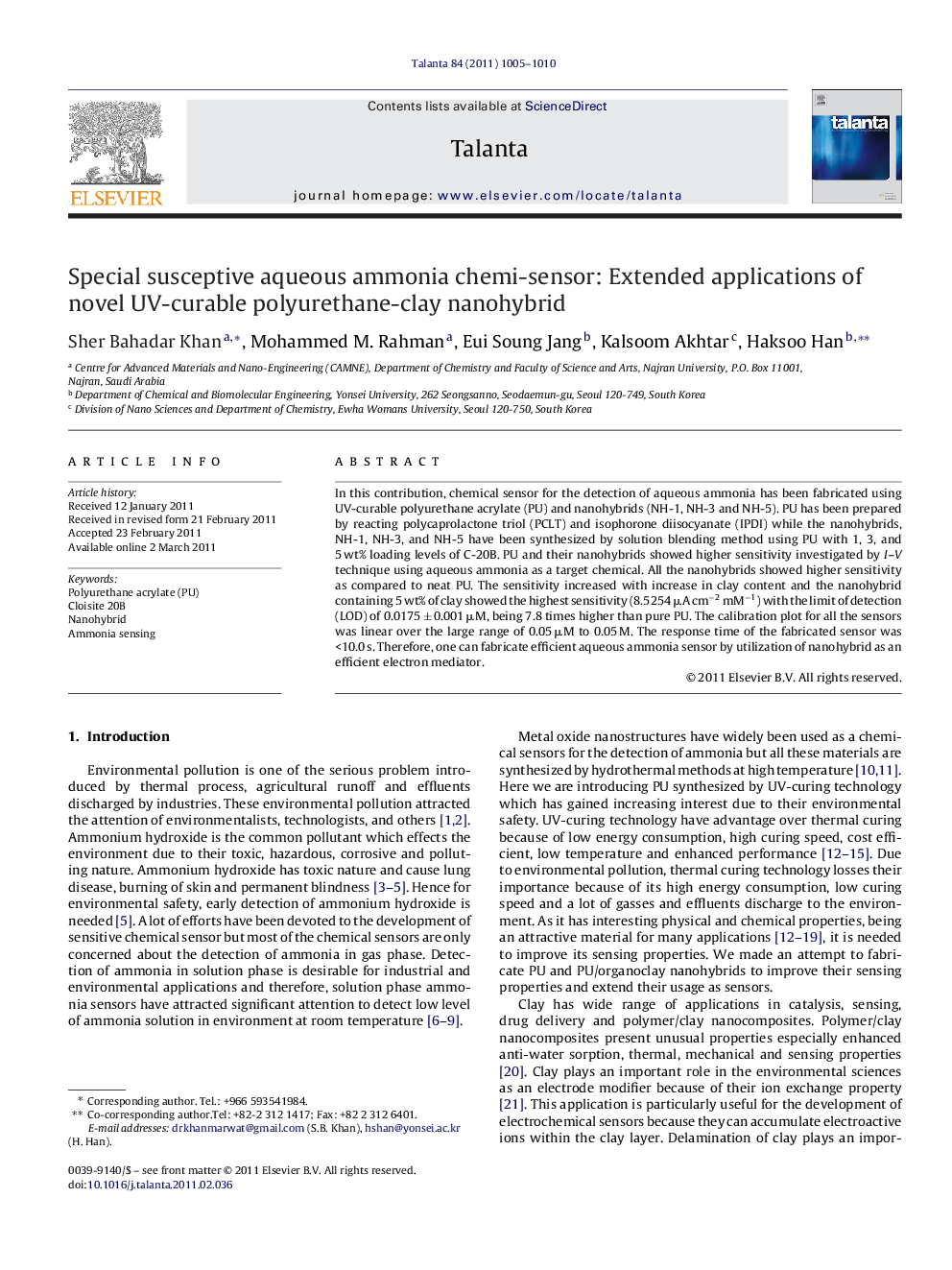| Article ID | Journal | Published Year | Pages | File Type |
|---|---|---|---|---|
| 10559998 | Talanta | 2011 | 6 Pages |
Abstract
In this contribution, chemical sensor for the detection of aqueous ammonia has been fabricated using UV-curable polyurethane acrylate (PU) and nanohybrids (NH-1, NH-3 and NH-5). PU has been prepared by reacting polycaprolactone triol (PCLT) and isophorone diisocyanate (IPDI) while the nanohybrids, NH-1, NH-3, and NH-5 have been synthesized by solution blending method using PU with 1, 3, and 5 wt% loading levels of C-20B. PU and their nanohybrids showed higher sensitivity investigated by I-V technique using aqueous ammonia as a target chemical. All the nanohybrids showed higher sensitivity as compared to neat PU. The sensitivity increased with increase in clay content and the nanohybrid containing 5 wt% of clay showed the highest sensitivity (8.5254 μA cmâ2 mMâ1) with the limit of detection (LOD) of 0.0175 ± 0.001 μM, being 7.8 times higher than pure PU. The calibration plot for all the sensors was linear over the large range of 0.05 μM to 0.05 M. The response time of the fabricated sensor was <10.0 s. Therefore, one can fabricate efficient aqueous ammonia sensor by utilization of nanohybrid as an efficient electron mediator.
Keywords
Related Topics
Physical Sciences and Engineering
Chemistry
Analytical Chemistry
Authors
Sher Bahadar Khan, Mohammed M. Rahman, Eui Soung Jang, Kalsoom Akhtar, Haksoo Han,
